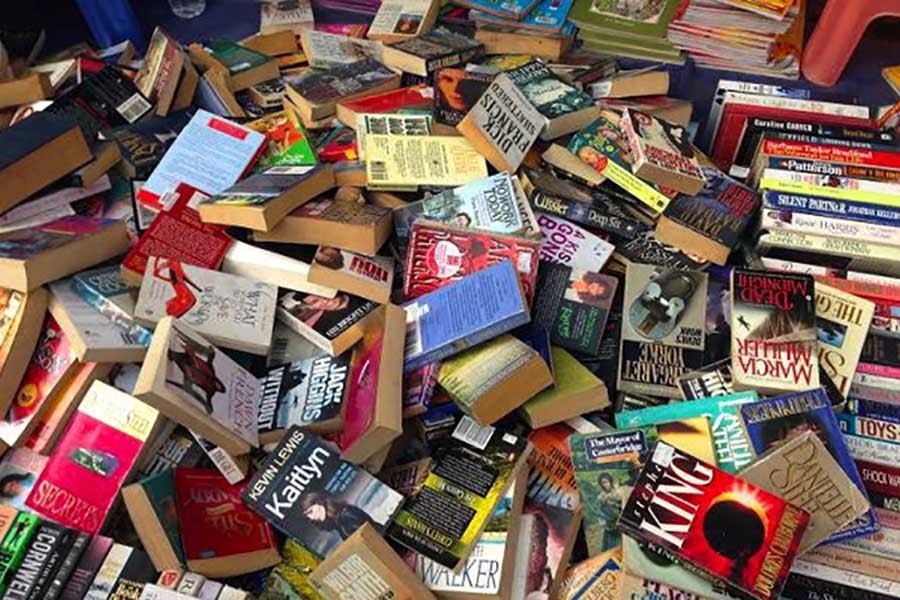The footpath segment and the adjacent open space on the right side of the Balaka cinema in Dhaka in the 1960s were known as an old-book hub. Then a largely sleepy area in Dhaka, free from today's maddening commercial activities, it offered a different look with its sparsely present improvised shops, mostly selling old books laid out on jute mats. A section of students of the nearby Dhaka College and Dhaka University used to visit the shops to buy second-hand Indian and paperback English fictions.
The scenario later underwent a radical change with the entry of low-priced Indian Bangla fictions. Those were printed in Dhaka. They came to be known as pirated Indian books. After over nearly five decades, the same venue became a popular hangout for people looking for English fictions by their favourite writers, alongside Indian Bangla books. There is a catch: the books are unbelievably cheap. And despite being pirated, they are well produced and impeccably printed on quality paper. Thanks to an advanced yet handy printing technology available in the Nilkhet area, the low-priced foreign books can now be purchased by fixed-income readers. They are unreachable at upscale shops. Few readers bother about the fact that these books have been published illegally.
Pirated books have a long history in Dhaka and other parts of the country. They formed a unique spectacle in the pre-independence period. Until then fake books had been an unknown phenomenon. In the publication world and among the reading people in those times the notion of 'pirated books' pointed to a common fact --- the carelessly printed Indian books, which generally belonged to the genre of fiction. Their original editions were published in West Bengal, India. The import of original Indian books written by popular authors was officially banned after the 1965 India-Pakistan War. It resulted in the flooding of the market by pirated Indian fictions. The books, in raw paperback format, would invariably be printed on newsprint, with their cover-pages designed by artists in Dhaka. Printing errors made these novels and story collections virtually inaccessible to discerning readers. In the absence of the original books, these phony publications appeared to be the only medium for many to keep their reading habit alive. A few houses were, however, said to have received formal permission of the Kolkata-based publishers to print their books in Dhaka in the 1960s. But they were overwhelmed by the fake publishing syndicates.
In the absence of local popular writers during that time, obscure publishers made a quick buck by illegally reprinting Indian Bangla hot cakes, with their legitimate copyright-holders --- the Indian publishers, in the dark and being deprived. This publication spree continued till the independence of Bangladesh in 1971. It changed its character in the independent country. Well produced, but pirated, Indian books eventually phased out the poorly-done productions. Popular roadside book hubs in Dhaka in 2018 openly sell pirated Indian and English books. Due to their high production standards, one may find it hard to tell them from the original ones.
These books serve two classes. One class covers the readers who start looking for the new books soon after their publication. High price deters them from collecting the books from formal stores. The only option then lies before them is buying the pirated publications. The other class constitutes the printers and publishers of these books. Since they are engaged in a shady business, few expect them to abide by ethical norms. Many readers find themselves in a dilemma. They are evidently caught between the strong urge to read and the prick of conscience for promoting a questionable activity --- i.e. trade in book piracy. Lowering duty on imported books coupled with measures against the unethical business can ease the situation.


